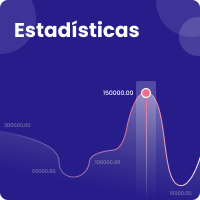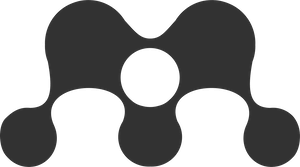Evaluación de nuevas arquitecturas de IA para la estimación de la incertidumbre
Resumen
El Aprendizaje Profundo (AP) ha hecho avanzar la visión por ordenador, ofreciendo un rendimiento impresionante en tareas visuales complejas. Sin embargo, persiste la necesidad de estimaciones precisas de la incertidumbre, en particular para las entradas fuera de distribución (OOD, en su acrónimo en inglés). Nuestra investigación evalúa la incertidumbre en Redes Neuronales Convolucionales (CNN, en inglés) y transformadores de visión (ViT, inglés) utilizando los conjuntos de datos MNIST e ImageNet-1K. Utilizando plataformas de Alto Rendimiento (HPC, en inglés), incluidos el superordenador tradicional Polaris y aceleradores de IA como Cerebras CS-2 y SambaNova DataScale, evaluamos los méritos computacionales y los cuellos de botella de cada plataforma. En este artículo se describen las consideraciones clave para utilizar la HPC en la estimación de la incertidumbre en el AP, y se ofrecen ideas que guían la integración de algoritmos y hardware para aplicaciones de AP robustas, especialmente en visión por ordenador.
Referencias bibliográficas
Amini, A., Schwarting, W., & Rus, D. (2020, December 6). Deep evidential regression. In H. Larochelle, M. Ranzato, R. T. Hadsell, M. F. Balcan, & H. Lin (Eds.), NIPS'20: 34th International Conference on Neural Information Processing Systems, Vancouver BC, Canada, December 6-12, (pp. 14927-14937, Article 1251). Red Hook, NY, USA: Curran Associates Inc. doi:10.5555/3495724.3496975
ANL. (2021, August 26). Polaris. (Argonne National Laboratory) Retrieved July 2023, from ANL website: https://www.alcf.anl.gov/polaris
Bojarski, M., Yeres, P., Choromanska, A., Choromanski, K., Firner, B., Jackel, L., & Muller, U. (2017, April 25). Explaining how a deep neural network trained with end-to-end learning steers a car. arXiv:1704.07911v1 [cs.CV], 1-8. doi:10.48550/arXiv.1704.07911
Cordonnier, J.-B., Loukas, A., & Jaggi, M. (2020). On the relationship between selfattention and convolutional layers. Eighth International Conference on Learning Representations - ICLR 2020, April 26-30. Addis Ababa. Retrieved from https://infoscience.epfl.ch/entities/publication/48815b9c-e947-4c4d-84fa-7ebf1f6df4dd/conferencedetails
Deng, J., Dong, W., Socher, R., Li, L.-J., Li, K., & Li, F.-F. (2009). Imagenet: A large-scale hierarchical image database. In 2009 IEEE Conference on Computer Vision and Pattern Recognition, 20-25 June (pp. 248-255). Miami, FL, USA: IEEE. doi:10.1109/CVPR.2009.5206848
Emani, M., Vishwanath, V., Adams, C., Papka, M. E., Stevens, R., Florescu, L., . . . Sujeeth, A. (2021, March 26). Accelerating scientific applications with sambanova reconfigurable dataflow architecture. Computing in Science & Engineering, 23(2), 114–119. doi:10.1109/MCSE.2021.3057203
Gal, Y., & Ghahramani, Z. (2016, June). Dropout as a bayesian approximation: Representing model uncertainty in deep learning. In M. F. Balcan, & K. Q. Weinberger (Ed.), Proceedings of The 33rd International Conference on Machine Learning. 48, pp. 1050-1059. New York, New York, USA (20–22 Jun 2016): PMLR. Retrieved from https://proceedings.mlr.press/v48/gal16.html
Geifman, Y., & El-Yaniv, R. (2017, December 4). Selective classification for deep neural networks. In U. von Luxburg, I. M. Guyon, S. Bengio, H. M. Wallach, & R. Fergus (Eds.), NIPS'17: Proceedings of the 31st International Conference on Neural Information Processing Systems, Long Beach, California, USA, December 4 - 9, 2017 (pp. 4885-4894). Red Hook, NY, USA: Curran Associates Inc. doi:10.5555/3295222.3295241
Guo, C., Pleiss, G., Sun, Y., & Weinber, K. Q. (2017). On calibration of modern neural networks. In D. Precup, & Y. W. Teh (Ed.), Proceedings of the 34th International Conference on Machine Learning. 70, pp. 1321-1330. PMLR. Retrieved from https://proceedings.mlr.press/v70/guo17a.html
Hendrycks, D., Liu, X., Wallace, E., Dziedzic, A., Krishnan, R., & Song, D. (2020, July). Pretrained transformers improve out-of-distribution robustness. In D. Jurafsky, J. Chai, N. Schluter, & J. Tetreault (Eds.), Proceedings of the 58th Annual Meeting of the Association for Computational Linguistics (pp. 2744–2751). Online: Association for Computational Linguistics. doi:10.18653/v1/2020.acl-main.244
Lecun, Y., Jackel, L. D., Bottou, L., Cortes, C., Denker, J. S., Drucker, H., . . . Vapnik, V. (1995). Learning algorithms for classification: A comparison on handwritten digit recognition. In J. H. Oh, C. Kwon, & S. Cho (Eds.), Learning algorithms for classification: A comparison on handwritten digit recognition (pp. 261-276). World Scientific. Retrieved from https://nyuscholars.nyu.edu/en/publications/learning-algorithms-for-classification-a-comparison-on-handwritte
Lie, S. (2022). Cerebras architecture deep dive: First look inside the hw/sw co-design for deep learning. In 2022 IEEE Hot Chips 34 Symposium (HCS), 21-23 August (pp. 1–34). Cupertino, CA, USA: IEEE. doi:10.1109/HCS55958.2022.9895479
Liu, Y., & Guo, H. (2020, July 13). Peer loss functions: Learning from noisy labels without knowing noise rates. In H. C. Daumé, & A. Singh (Eds.), ICML'20: International Conference on Machine LearningJuly 13 - 18 (Vols. 119, Article 578, pp. 6226–6236). JMLR.org.
MacDonald, S., Foley, H., Yap, M., Johnston, R. L., Steven, K., Koufariotis, L. T., . . . Trzaskowski, M. (2023, May 6). Generalising uncertainty improves accuracy and safety of deep learning analytics applied to oncology. Scientific Reports, 13, 7395. doi:10.1038/s41598-023-31126-5
Ovadia, Y., Fertig, E., Ren, J., Nado, Z., Sculley, D., Nowozin, S., . . . Snoek, J. (2019). Can you trust your model's uncertainty? evaluating predictive uncertainty under dataset shift. In H. Wallach, H. Larochelle, A. Beygelzimer, F. d'Alché-Buc, E. Fox, & R. Garnett (Eds.), Advances in Neural Information Processing Systems (Vol. 32). Red Hook, NY, USA: Curran Associates Inc. Retrieved from https://proceedings.neurips.cc/paper_files/paper/2019/file/8558cb408c1d76621371888657d2eb1d-Paper.pdf
Ren, A. Z., Dixit, A., Bodrova, A., Singh, S., Tu, S., Brown, N., . . . Majumdar, A. (2023, September 4). Robots that ask for help: Uncertainty alignment for large language model planners. arXiv:2307.01928v2 [cs.RO], 1-24. doi:10.48550/arXiv.2307.01928
Tamkin, A., Nguyen, D., Deshpande, S., Mu, J., & Goodman, N. (2022). Active learning helps pretrained models learn the intended task. In S. Koyejo, S. Mohamed, A. Agarwal, D. Belgrave, K. Cho, & A. Oh (Eds.), Advances in Neural Information Processing Systems (Vol. 35, pp. 28140-28153). Curran Associates Inc. Retrieved from https://proceedings.neurips.cc/paper_files/paper/2022/file/b43a0e8a35b1c044b18cd843b9771915-Paper-Conference.pdf
Wenzel, F., Snoek, J., Tran, D., & Jenatton, R. (2020, Decembre 6). Hyperparameter ensembles for robustness and uncertainty quantification. In H. Larochelle, M. Ranzato, R. T. Hadsell, M. F. Balcan, & H. Lin (Eds.), NIPS'20: Proceedings of the 34th International Conference on Neural Information Processing Systems, Vancouver, BC, Canada, December 6 - 12, 2020 (pp. 6514–6527). Red Hook, NY, USA, Article 546: Curran Associates Inc. doi:10.5555/3495724.3496270
Descargas
Derechos de autor 2025 Revista Colombiana de Computación

Esta obra está bajo una licencia internacional Creative Commons Atribución-NoComercial-CompartirIgual 4.0.












